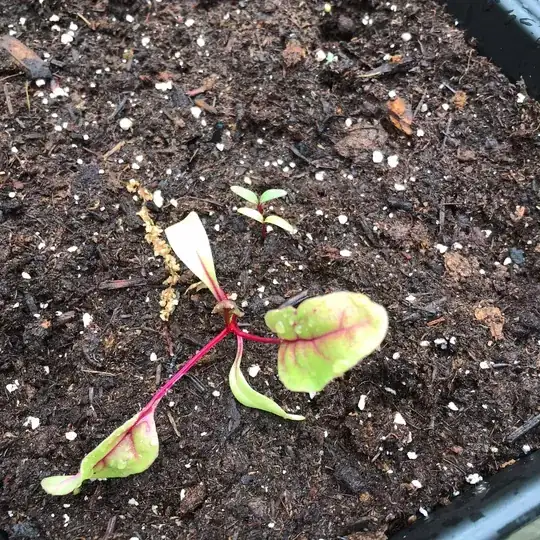If you examine the seeds of chard very closely you will see it is a bumpy mass of brown, and if you squeeze it a bit it falls apart into a powdery material with small black points inside it. The "seed" is in fact a cluster of much smaller seeds enveloped in a dry mass. When this mass is placed in moist soil the small black seeds start to germinate, some faster than others, so that over the period of a few days you get about 5-8 plants where you only planted one seed. Likely what happened in your case is that one came up really fast, you took that one out, mixed up the soil a bit, and one of the others has now emerged. All perfectly natural. Not off the same root, but brothers and sisters of the same parent. Typical of the beet family of plants.
Gardeners often anticipate this behaviour by setting out chard seeds with wide spacing, then as these clusters of seedlings appear they are quickly separated, transplanted away from their siblings to fill in the row.
